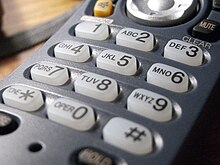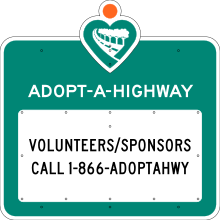Letters On A Phone Keypad

A telephone keypad using the ITU East.161 standard.
A telephone keypad is a keypad installed on a push-push button telephone or similar telecommunication device for dialing a phone number. It was standardized when the dual-tone multi-frequency signaling (DTMF) system was developed in the Bell System in the United States in the 1960s that replaced rotary dialing originally developed in electromechanical switching systems.[1] Because of the installed abundance of rotary dial equipment well into the 1990s, many telephone keypads were likewise designed to produce loop-disconnect pulses electronically, and some could be optionally switched to produce either DTMF or pulses.
The development of the modernistic telephone keypad is attributed to research in the 1950s by Richard Deininger nether the directorship of John Karlin at the Human Factors Engineering Department of Bong Labs.[2] [3] The contemporary keypad is laid out in a rectangular array of twelve push buttons arranged as 4 rows and iii columns of keys. For armed services applications, a fourth, right-nigh column of keys was added for priority signaling in the Autovon arrangement in the 1960s. Initially, between 1963 and 1968, the keypads for civilian subscriber service omitting the lower left and lower right keys that ordinarily are assigned to the star (✻) and number sign (#) signals, respectively. These keys were added to provide signals for anticipated data entry purposes in business applications, but found use in Custom Calling Services (Class) features installed in electronic switching systems.[4]
Layout [edit]

Telephone with letters on its rotary punch (1950s, Britain)
The layout of the digit keys is unlike from that usually appearing on calculators and numeric keypads. This layout was chosen after extensive human factors testing at Bong Labs.[three] [5] At the time (late 1950s), mechanical calculators were not widespread, and few people had experience with them.[6] Indeed, calculators were just just starting to settle on a common layout; a 1955 paper states "Of the several calculating devices we have been able to look at... Ii other calculators take keysets resembling [the layout that would get the most common layout].... Nigh other calculators have their keys reading up in vertical rows of ten,"[v] while a 1960 paper, just five years later, refers to today's common calculator layout as "the arrangement frequently found in ten-key adding machines".[3] In any case, Bell Labs testing establish that the telephone layout with 1, 2, and 3 in the summit row, was slightly faster than the estimator layout with them in the bottom row.

The key labeled ✻ was officially named the "star" cardinal. The primal labeled # is officially called the "number sign" central, but other names such as "pound", "hash", "hex", "octothorpe", "gate", "lattice", and "square", are common, depending on national or personal preference. The Greek symbols blastoff and omega had been planned originally.[seven]
These tin be used for special functions. For example, in the Britain, users can order a 7:30am warning call from a BT telephone exchange by dialing: ✻55✻0730#.[8]
Most of the keys also bear messages according to the following system:

A standard telephone keypad.
| Number | Letter |
|---|---|
| 0 | none (on some telephones, "OPERATOR" or "OPER") |
| i | none (on some older telephones, QZ) |
| 2 | ABC |
| 3 | DEF |
| four | GHI |
| v | JKL |
| 6 | MNO (on some older telephones, MN) |
| 7 | PQRS (on older telephones, PRS) |
| 8 | TUV |
| ix | WXYZ (on older telephones, WXY) |
These letters have been used for multiple purposes. Originally, they referred to the leading letters of telephone exchange names. In the mid-20th century United States, before the switch to All-Number Calling, phone numbers had vii digits including a 2-digit prefix which was expressed in letters rather than digits, e.g.; KL5-5445. The United kingdom of great britain and northern ireland telephone numbering organisation used a like two-alphabetic character code after the initial cypher to form the offset part of the subscriber torso dialling lawmaking for a region. For example, Aylesbury was assigned 0AY6, which translated into 0296.

The messages have also been used, mainly in the United States, equally a technique for remembering phone numbers easily. For example, an interior decorator might license the phone number 1-800-724-6837, simply advertise it equally the more memorable phoneword i-800-PAINTER. Sometimes businesses annunciate a number with a mnemonic discussion having more than letters than in that location are digits in the phone number. Usually, this means that the caller just stops dialing at vii digits after the surface area lawmaking or that the actress digits are ignored by the central office.
In feature phones the letters on the keys are used for text entry tasks such as text messaging, entering names in the phone volume, and browsing the spider web. To recoup for the smaller number of keys, phones used multi-tap and afterward predictive text processing to speed up the process. Touch-screen phones have made this method obsolete, equally they can simulate every bit many buttons every bit necessary for full text entry.
Key tones [edit]
Pressing a single key of a traditional analog telephone keypad produces a telephony signaling event to the remote switching arrangement. For touchtone service, the point is a dual-tone multi-frequency signaling tone consisting of ii simultaneous pure tone sinusoidal frequencies. The row in which the key appears determines the depression-frequency component, and the column determines the loftier-frequency component. For example, pressing key 1 results in a signal composed of tones with frequencies 697 hertz (Hz) and 1209 Hz.
| 1209 Hz | 1336 Hz | 1477 Hz | 1633 Hz | |
|---|---|---|---|---|
| 697 Hz | one | two | 3 | A |
| 770 Hz | 4 | 5 | half-dozen | B |
| 852 Hz | 7 | eight | 9 | C |
| 941 Hz | ✻ | 0 | # | D |
Alphabetic character mapping [edit]

Mobile phone keypad with Latin and Japanese messages.
In the course of telephone history, the positions of telephone dials, as well as keypads have been associated with various patterns of mapping messages and characters to numbers (keyboard layout).
The system used in Denmark[ failed verification ] was dissimilar from that used in the U.K., which was different from the U.Southward. and Australia.[nine] The use of alphanumeric codes for exchanges was abandoned in Europe when international direct dialing was introduced in the 1960s, because, for example, dialing VIC 8900 on a Danish telephone would result in a dissimilar number to dialling it on a British telephone. At the same time letters were no longer placed on the dials of new telephones.
Letters did not re-appear on phones in Europe until the introduction of mobile phones, and the layout followed the new international standard ITU Due east.161/ISO 9995-eight. The ITU established an international standard (ITU Eastward.161) in the mid-1990s, and that should be the layout used for any new devices.[ten] In that location is a standard, ETSI ES 202 130, that covers European languages and other languages used in Europe, published by the contained ETSI organisation in 2003[11] and updated in 2007.[12] Work describing some principles of the standard is bachelor.[xiii]
Since many newer smartphones, such as the Palm Treo and BlackBerry, take full alphanumeric keyboards instead of the traditional telephone keypads, the user must execute additional steps to dial a number containing convenience letters. On sure BlackBerry devices, a user can printing the Alt cardinal, followed past the desired letter, and the device will generate the appropriate DTMF tone.[fourteen]
Run into likewise [edit]
- Eastward.161
- T9
References [edit]
- ^ Agogino, Alice (Nov 18, 2009). "Engineering Educational activity "Today in History" Weblog: Bell Telephone introduces push phone". Technology Pathway. Archived from the original on January 27, 2013.
- ^ B.L. Hanson, A Cursory History of Applied Behavioral Science at Bell Laboratories, Bell Organisation Technical Journal 62(half dozen) 1571–1590 (July–August 1983), p.1578
- ^ a b c Deininger, R. Fifty. (1960-02-16). "Human Factors Engineering Studies of the Design and Use of Pushbutton Telephone Sets". Bell System Technical Periodical. 39 (four): 995–1012. doi:10.1002/j.1538-7305.1960.tb04447.x.
- ^ D.P. Worrall, New Custom Calling Services, Bong System Technical Journal 61(5) 821–839 (May–June 1982)
- ^ a b Lutz, Mary Champion; Chapanis, Alphonse (October 1955). "Expected Locations of Digits and Letters on 10-Button Keysets". Journal of Applied Psychology. 39 (v): 314–317. doi:10.1037/h0048722.
- ^ Brady Haran (producer), Sarah Wiseman (interviewee) (2013-08-29). Phone Numbers - Numberphile. Archived from the original on 2021-12-12. Retrieved 2016-05-xi .
- ^ Koten, John F., " *# ", WSJ.Money Magazine, Upshot five, p. 22 (Spring 2014). The star and number sign were probable kickoff suggested past John A. "Jack" Koten (1929-2014), a corporate communications specialist with Bell Labs in Chicago, reasoning that the new keys would exist easier to explain to a public already familiar with typewriter symbols.
- ^ "Reminder Phone call Instructions | BT Business organisation".
- ^ Telephone Key Pads Archived 2015-03-xv at the Wayback Machine
- ^ E.161 : Arrangement of digits, letters and symbols on telephones and other devices that can exist used for gaining access to a phone network
- ^ ETSI (2003-10-29), ETSI ES 202 130 Ver. i.1.1: Human Factors (HF); User Interfaces; Graphic symbol repertoires, ordering rules and assignments to the 12-fundamental phone keypad, ETSI, retrieved 2011-11-03
- ^ ETSI (2007-09-06), ETSI ES 202 130 Ver. 2.ane.two: Human Factors (HF); User Interfaces; Character repertoires, orderings and assignments to the 12-central telephone keypad (for European languages and other languages used in Europe), ETSI
- ^
- ^ Blackberry Tips, PC World, October 2005.
Letters On A Phone Keypad,
Source: https://en.wikipedia.org/wiki/Telephone_keypad
Posted by: cliffordponeely.blogspot.com


0 Response to "Letters On A Phone Keypad"
Post a Comment